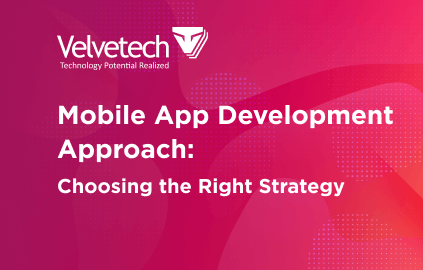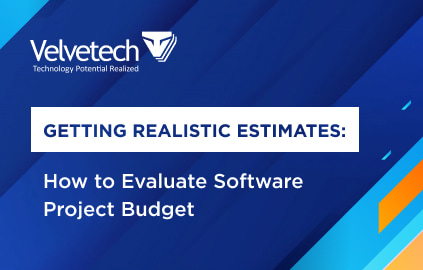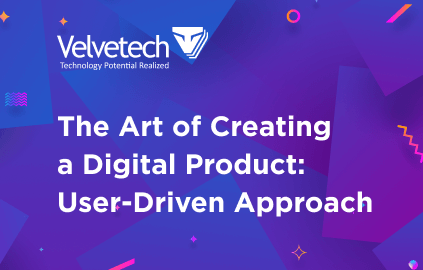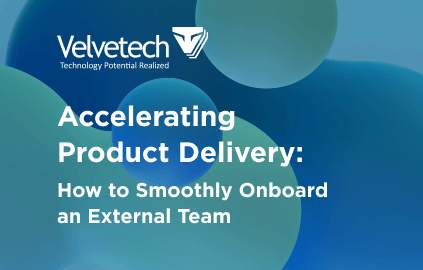Every day, the number of apps released to the market grows. Plus, right now, there are more mobile devices in the world than there are people. No wonder that by 2026 mobile applications are projected to generate $233 billion in revenue.
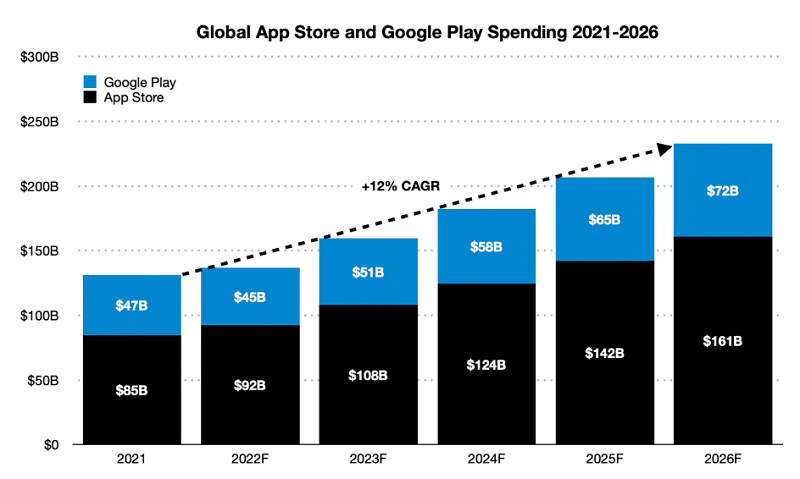
With such promising forecasts, it’s easy to see why many companies are looking into mobile app development.
Some businesses are interested in creating the next TikTok or Zoom. Thus, focusing on consumer-facing projects and the revenue they can generate. Others, want to optimize internal processes and choose to invest in enterprise solutions that can reduce expenses and improve efficiencies.
Discover the difference between Consumer and Enterprise Mobile Apps
Whatever the case, if developing a mobile solution is of interest to your firm, it’s valuable for you to know the process of building an app. Today, we’re going to share with you a mobile app creation guide based on our experience and discuss each step of making the app of your dream. Let’s get going.
7 Key Steps of Mobile App Development Process
The process of mobile app development can somewhat vary on an individual basis. However, the following seven steps are the ones that you’ll likely have to go through:
- Strategy Development
- Analysis and Planning
- UI/UX Design
- App Development
- Application Testing
- Deployment
- Support and Performance Monitoring
So, without further ado, read on to find out what the seven key stages of the mobile app development process are and take into account a few considerations to ensure a smooth flow before you start.
Step 1: Strategy Development
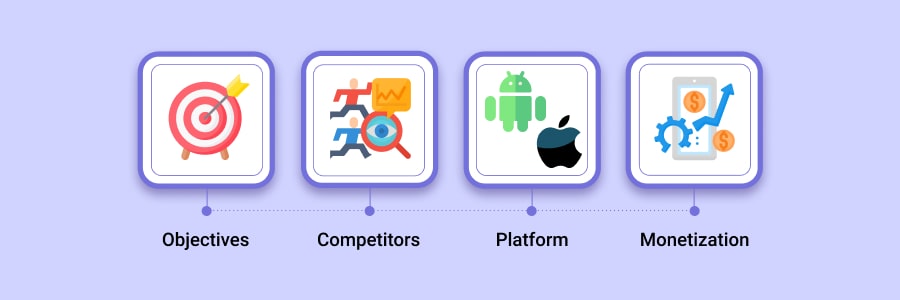
The very first step of the app development process is, unsurprisingly, defining the strategy. At this point, you’ve got to start thinking carefully about your future application, its goals, capabilities, and business model.
Identify Objectives
Whether you’re building a consumer or enterprise app, you’ll likely begin by identifying its main objectives. This can be done by answering the following questions:
- What problem will my application solve?
- Who are its target users?
- What results do I want my app to achieve?
The truth is, you might not have to think too much about these questions because you may already have the initial idea for your app. However, it’s still good to note the key objectives down so you can always refer back to the goals you are striving for.
Research Competitors
The next step of strategy planning is looking into your existing or potential competitors.
Are there any apps on the market that serve the same purpose? How are they performing? Do they have many installs and positive reviews?
By researching your competition you will be able to bypass mistakes that may already have been made within your industry. Moreover, you’ll get an idea about the current landscape of similar mobile apps and be able to determine how you can differentiate from competitors.
Select Platform
At the strategy development phase of the app creation process, you’ll also need to decide for which platform you’re building your tool. Will it be a custom Android solution? Or, is an iOS app a better pick? Or, perhaps, it is a cross-platform application that you truly need.
We’ll later go into more detail about the various options you have, but it’s important to already begin thinking about this area of the process.
Discover the Main Differences Between iOS and Android Apps
Choose Monetization Method
Lastly, choosing the right monetization method is only applicable for those delivering a consumer application. In this case, you want to make direct money from your investment, but there are various options for you to pick from, including:
- In-app advertising
- In-app purchases
- Subscriptions
- Affiliate marketing
- Paid apps
The monetization method depends on your goals and the type of an application that you’re making. For example, if you’re developing a dating app, it’s probably not a good idea to charge for downloads. Instead, you’ll likely go for in-app purchases and subscriptions.
On the contrary, if you choose to build a game app, chances are you’ll leverage in-app advertising along with in-app purchases and subscriptions.
As you can see, everything depends on the purpose of your application. However, it’s worth mentioning that the subscription-based monetization model seems to be gaining widespread approval.
Choosing a Winning App Development Strategy
Watch our webinar to uncover effective mobile development approaches and launch your app.
Step 2: Analysis and Planning

The second step to take is analysis and planning. At this point, you already have your idea in mind, have done some research, and know the general direction of where you’re heading.
Now is the time to get practical and turn to business analysis services to identify all of the details you need before jumping into the design and development stages.
Functional and Non-Functional Requirements
First, you’ve got to get specific with the actions that you want your mobile app to perform. If you’re building an app for the finance industry, perhaps you’ll need it to create new accounts, manage credit cards, make payments, generate account statements, and so on.
The tasks that your software has to perform will go into your functional requirements document. That way, you’ll gain a clearer idea of what features have to be developed.
Then, you will also need to think about the non-functional requirements of the software. These relate to the quality of how your system performs and have a big impact on the user experience.
Uncover the Difference Between Functional and Non-Functional Software Requirements
Product Roadmap
Next up is defining your app’s roadmap. This process is much like preparing for the future and making a detailed plan of how you’ll reach the end goals you’ve set.
On the day your Minimum Viable Product (MVP) is released, you want it to be successful and avoid any potential failures. Hence, during the product roadmap creation, you note down all of the things that you want your app to be able to do. Then, you make a ranking of the top priority functions and consider which features can be added at a later date.
Take a look at the Essential Mobile App Features to Prioritize in MVPs
Technology Stack
The last part of the analysis and planning phase includes identifying the skills needed for your mobile project.
If you’re building an iOS app, you’ll need experienced iOS developers. If you want to create a cross-platform app, then you need someone skilled in technologies like Titanium, Xamarin, and others fit for multi-platform development.
So, don’t forget to have the technology stack aspect of your project figured out before moving on.
Project Estimates
Watch our webinar to learn about the practical ways to evaluate your software project estimates.
Step 3: UI/UX Design
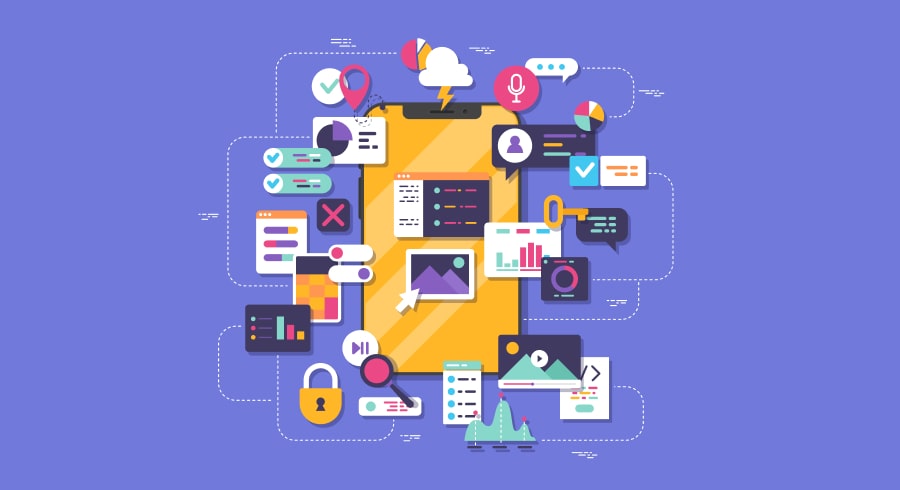
In order for users to get the best experience, a lot of attention has to be paid to an app’s design. If it turns out messy or faulty, users will immediately flock to competitors and abandon the tool you’ve worked so hard on. That’s why this step requires a lot of effort when you want to create an app that users love.
So, your UI/UX design has to be intuitive, user-friendly, engaging, and offer a seamless experience. Let’s keep that in mind while we look at each of the design areas more closely.
Information Architecture and Workflows
One of the first steps of the app design process is developing rules as a part of your app’s information architecture. You’ll need to establish what data will be present within your app, how it will be displayed, and how the users will interact with it.
On the basis of the above, you’ll then create workflow diagrams that can be very helpful in keeping track of all possible user interactions. Essentially, they will let you see how your app’s navigation is implemented.
Wireframes
Next, business analysts create digital sketches called wireframes. These are basically conceptual layouts that provide a visual structure of your app’s functionality.
Read up on The Role of Business Analysis in Mobile Projects
Wireframes usually emphasize the user experience and app aesthetics. All to ensure that the finished application is intuitive and seamless to use.
Style Guides
Style guides are created so that your company branding can be easily found within a single document. These records usually contain the following design aspect of your app:
- Fonts
- Color scheme
- Spacing and positioning instructions
- Buttons
- Widgets
- Other relevant design elements
Style guides are essential to your app’s design strategy. They help maintain consistency within your app and ensure its look and feel are always harmonious.
Mockups
After you’ve created your app style guides, it’s time to move on to mockups. Essentially, these are the final renderings of your app visuals, and they are created by applying the style guide to the wireframes.
After completing this stage, the most important thing is to ensure that your design is consistent throughout the app.
Prototypes
Finally, the last step of the UI/UX design process is developing prototypes.
Prototypes let you simulate the user experience and the app’s entire workflow. That way, you get a good sense of how everything will work upon completion.
This stage of the process can be time-consuming but don’t overlook it. When done properly, a prototype can help you detect any design and functionality mishaps that you may want to fix.
User-Driven Approach
Watch our webinar and learn the top ways of reducing poor user satisfaction, low adoption rates, and decreased loyalty.
Step 4: App Development

Now that the design phase is complete, it’s time to move on to one of the most important stages of your mobile app development process. Typically, it’s made up of two main parts — backend and frontend.
Backend
The backend stage of app development involves creating databases and server-side objects that are responsible for your app performance.
At this point, your project team will choose appropriate programming languages and begin coding the app. Additionally, database engines and a hosting environment will be selected.
The backend part of the app development life cycle is crucial and determines the scalability of your mobile app in the future.
So, if you want your application to expand as your user base grows — make sure you’re working with experienced software developers. They’ll guide you through all the key phases of application development and ensure your system can scale with ease.
Frontend
A mobile app’s frontend is what the end-user will interact with most. There are three main approaches to building it.
Platform-specific. These apps are created exclusively for each mobile platform. Meaning that the code isn’t reused between iOS and Android, but rather fully optimized for each one. It might be a more costly approach, but the speed and responsiveness can be worth it.
Find out How Much It Costs To Make an App
Cross-platform. Solutions that are built in this manner can run on different platforms with one single codebase.They are compatible with various operating systems and aren’t attached only to one. The main benefits of this approach are cost-effectiveness and code reusability.
Check out the Top Cross-Platform Technologies Used to Build Apps
Hybrid. These solutions contain elements of both — platform-specific apps and web applications. They allow developers to write the application code with standard web technologies and execute within a native shell. They are great if you want your app to run on multiple platforms but don’t have the time to build a cross-platform solution.
Lack of Developers
Find out how to deal with the lack of IT talents without compromising project delivery.
Step 5: Mobile App Testing
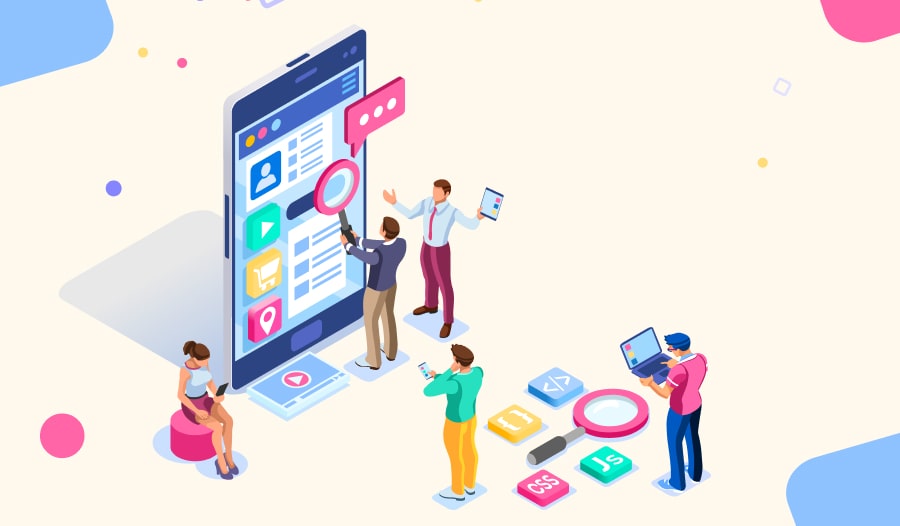
Once you’re done with app development, it’s time to begin testing. After all, you want to make sure the developed solution is stable, secure, and doesn’t have any bugs.
For the highest quality delivery, your app should undergo five testing methods prior to deployment.
Functionality. This is when you check the features of your application and ensure that everything works well.
Performance. During performance testing, you’ll need to pay attention to your app’s responsiveness and how it handles an increase in concurrent users.
Security. When building enterprise solutions like mobile insurance apps and healthcare applications, which operate in highly regulated industries, data protection is of utmost importance.
Yet, consumer apps must also instill confidence in users. So, before moving on to the next testing step, check that your app adheres to all security standards and that there aren’t any loopholes in your system.
Discover how Velvetech built a Medical Reference App For an Illinois-Based Clinic
Platform and Device. With new mobile devices coming to market yearly and operating systems updating monthly, it’s important for your application to stay on top of compatibility. Hence, it has to be tested on various devices or simulators.
Extended Review. Before proceeding to deployment, it’s a good idea to test your application with its actual final users. Whether you arrange a focus group or do a beta launch of your app — the key thing is to collect as much feedback as possible.
Step 6: Deployment

When you’re finally ready to deploy your app, you’ll have to go through different distribution models depending on the platform you were developing for.
The mobile application deployment strategy to follow is quite simple. You’ll either need to submit your application to Apple’s App Store or Google’s Play Store or go for private distribution.
Both stores require you to fill out several forms and submit your app for review. You should know, the App Store is considered to be much stricter with the applications it allows onto its marketplace. So, you might face difficulties if your iOS-based tool isn’t up to the highest standards.
On the other hand, if you’re opting for private distribution — check out Apple’s Developer Enterprise Program and Android’s Alternative Distributions in order to determine how best to proceed.
Step 7: Support and Performance Monitoring
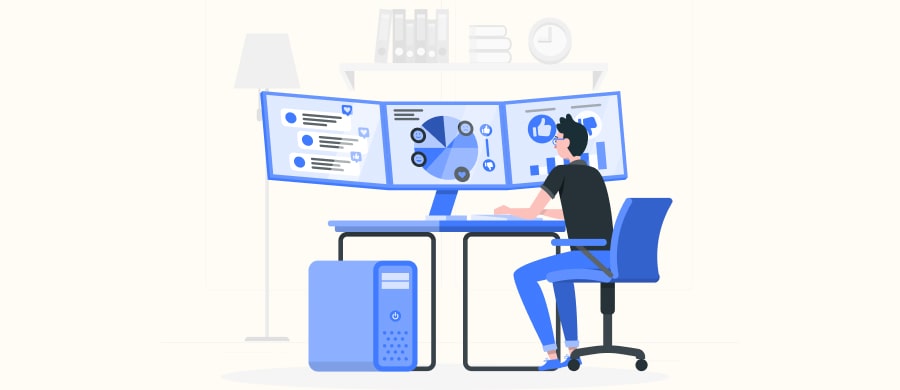
Once your app is finally live and users are steadily downloading it — it’s time to get your analytical hat on and monitor performance. Don’t underestimate this step, it may take more time than to develop an app itself and it should be managed continually.
Some of the most important KPIs you should look at are:
- App downloads
- Active users
- Average visit time
- Retention
- Churn
- Conversions
- Customer lifetime value
- Ratings
- Reviews
Also don’t forget to keep track of crashes, bugs, customer requests, and overall app performance. By doing that, you’ll be able to perfect your solution as time goes by.
Read how to Engage and Retain Your Mobile App Users
Overall, it’s just important to remember that work doesn’t stop once your app has been deployed. In fact, it’s only starting.
Mobile apps require regular updates to keep up with the latest operating system changes, review guidelines, and performance standards. Otherwise, you’ve just invested in a solution that won’t stay functional for very long.
So, make sure to account for the fact that your application will need continuous maintenance if it is to be worth it. Whether you choose to support it yourself or with the help of an outside firm is completely up to you.
If you’ve chosen to partner with a software development company for your mobile project — the vendor will certainly offer post-launch support services. Thus, taking the upkeep work off of your hands.
Figure out How to Choose a Partner for Your App Development
Key Considerations Before Starting the App Development Process
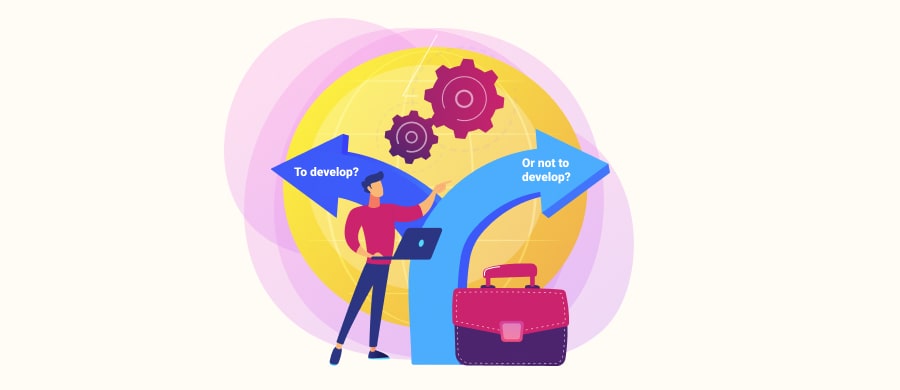
Now that you know the main app development process steps, you might be seriously considering starting your own mobile initiative.
However, before setting aside a budget and embarking on a software development journey, there are a few points you ought to consider.
1. Strategic relevance of building a mobile app
First, take the time to think if your business really needs a mobile app. Is it the next logical step in your digital strategy? Or, perhaps, are there some more pressing IT projects that you should take care of first?
Creating your own mobile application isn’t the cheapest endeavor. So, even though there are opportunities for building a high-quality app with a limited budget, truly consider if it’s a top priority for you or if it best to be postponed.
2. Implications of developing enterprise vs. consumer-facing apps
Even though the development process will be similar for both, enterprise applications and consumer-facing ones, certain strategic questions will differ based on who the end-users are.
For instance, when building a tool for the world to try, you’ll need to spend more time thinking about the uniqueness of your solution and its commercial purpose. Is your idea different enough to justify this investment?
On the other hand, if your employees are the end-users of the application, you’ll have to consider how to incorporate their preferences and opinions into the mobile tool. After all, you don’t want to create something that will not be well-received within your company.
3. The choice between in-house development and outsourcing
Lastly, you’ve got to determine whether you’ll be building your mobile app in-house or outsourcing to a development partner. The choice will largely depend on whether you have an experienced IT team within your organization and the ability to take on a mobile app project.
If you don’t have your own developers or they’re too busy with other assignments, it’s worth looking into outside vendors who can help you reach the goals you’ve set out and build a truly unique application for your business.
Find out Why You Should Outsource Your App Development
Expanding a Team
Watch our webinar to unveil the tricks of onboarding a tech partner and incorporating it into the process to foster your product delivery.
Should You Begin Your App Development Process?
It may seem like all the mobile application development stages you’ve got to climb are insurmountable. However, even with the lengthy list of steps and things to consider, it’s definitely an initiative that your firm should think about.
Whether you’re looking into mobile app development for internal use or for consumers, Velvetech’s team is happy to help. We have vast experience in developing solutions that solve corporate challenges and deliver state-of-the-art experiences to end-users.
So, if you’d like to discuss your next mobile initiative — don’t hesitate to reach out. Our team will get back to you shortly and answer any questions you may have.
